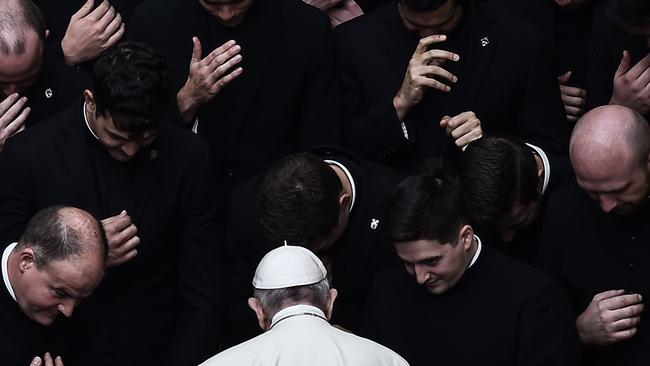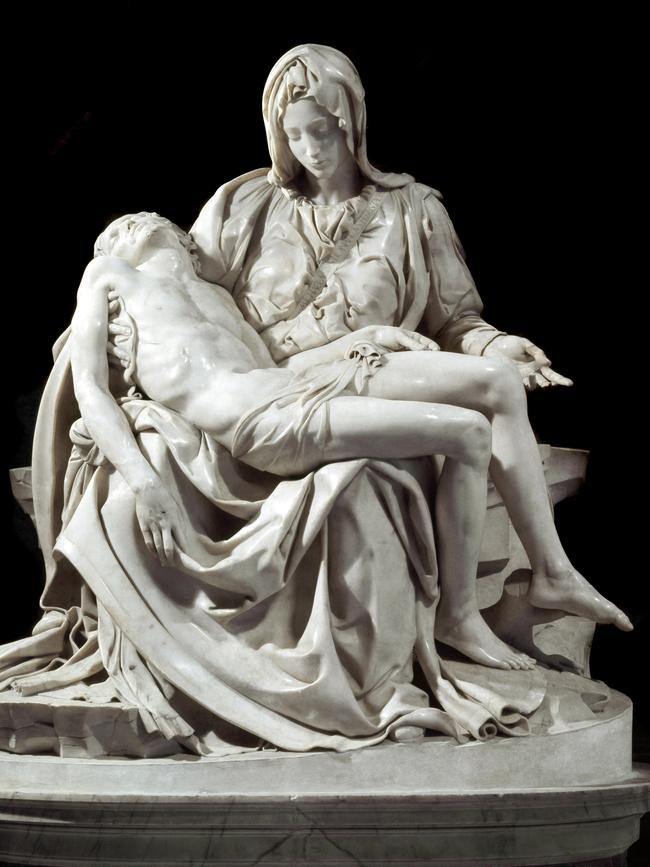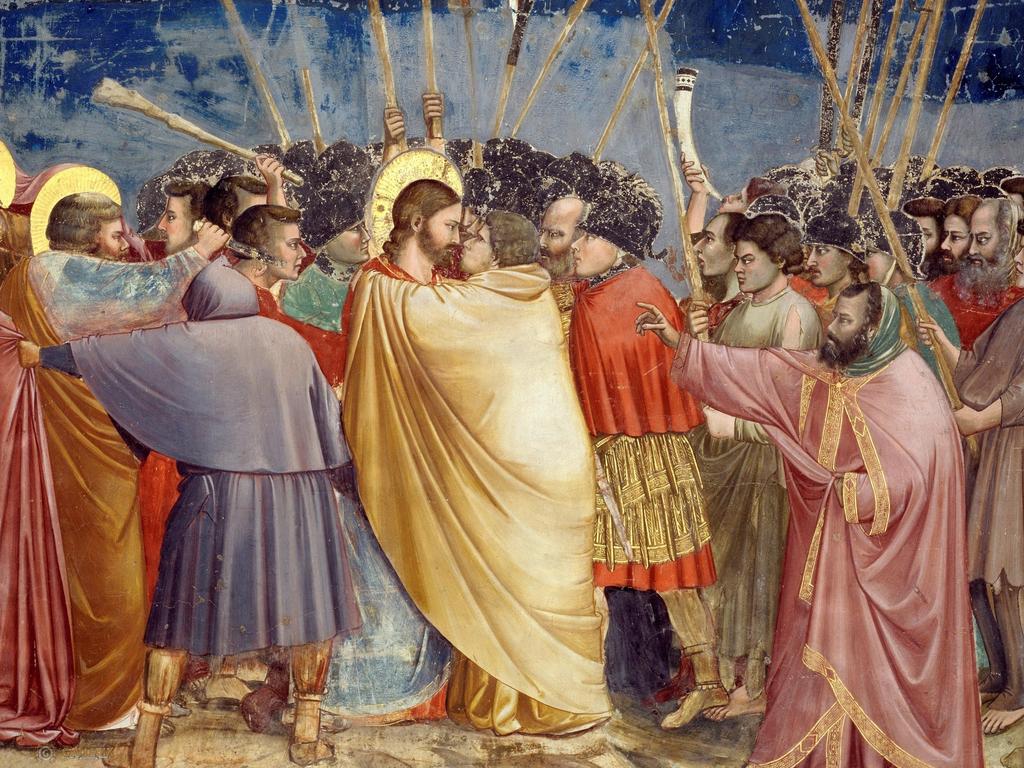Easter is, and always will be, the greatest story ever told

But we believe in Easter deep in our bones, whatever religious or agnostic or atheistic label we put on ourselves; we are intimate with Easter because it contains the two greatest stories we know, the contrasting stories of the death of Christ, the effective death of God, so grave and stark and tragic, and then the complementary story of him walking from the tomb, so exultant and glorious. As a civilisation, we are handed these stories on a platter like the fish and chips many of us would have eaten on Friday out of a habit older than the Reformation when the dream of a unified Christendom ruled the world as a just possible thing.
It structures the dream of a civilisation we inherit and which God knows is compatible with the wisdom of the world’s other great religions.
Good Friday is the day when the mass is not celebrated because the mass is the remembrance of the death of Christ that we had been told saved the world: whereas on Good Friday the killing of the God-Man was overtly, God help us, taking place. Remember the terrible cry of Jesus on the Cross:
“Eloi eloi lama sabbachtani. My God, my God, why hast Thou forsaken me?”
When I was a boy, there was a popular novelisation of the life of Christ The Greatest Story Ever Told which gave its name to the George Stevens movie which has in the role of Jesus the greatest actor ever to impersonate the figure who governs our very notion of time: the great Swedish actor, star of a score of Ingmar Bergman masterpieces, Max von Sydow. At the end of the book, one of the high priests – Annas, I think – is delighted at Jesus’ expression of despair but the other one, Caiaphas, the one who said it was necessary that one man die for the sake of the nation, says, “You absolute ninny and fool!” Why? Because he realises that it is prophesised that the Messiah, at his last breath, will come out with the mighty words of Psalm 22.
I remember a lifetime ago the stark spectacle of one of my teachers dressed only in a white shift reciting the terrible words of attrition, the supreme Hebrew lament of desolation: “But I am a worm and no man; a reproach of men and despised of the people.”

We retell this story, the tragedy of the passion, the glory of the resurrection in a thousand versions. Think of Aslan in CS Lewis’s Narnia tales. There is the death of the mighty God-like beast and there is a rising from the dead. I once asked my friend, the novelist Kamila Shamsie, who grew up in Karachi, if as a girl she had had trouble, given the Anglophile side of her, with the Christian mythology of the Narnia books (bear in mind that a myth can also be something that happened and continues to happen). “No, Peter,” she said. “Sometimes a lion is just a lion.” Well, yes and no. No matter how agnostic we think ourselves it’s difficult not to be hurled into a sense of a tragic story of overpowering gravity and truth. People who commemorated Good Friday according to the packdrill of the Catholic Church would have heard recited or sung the Passion of St John. Remember Pontius Pilate asking Jesus, “Art thou a king then?” and Jesus replying, “My Kingdom is not of this world.” Jesus says, “Thou sayest I am a king. To this end I was born and for this have I come into the world, that I should bear witness to the truth. Everyone that is of the truth heareth my voice.” And then Pilate says, “What is truth?”
He’s a great master of questions and terse statements, Pontius Pilate. Think of the disdain with which he says, “Am I a Jew?” Or the rattled sense of wonder with which he says, “I am innocent of the blood of this just man” knowing he is not as he allows the crowd to consent to Jesus’s execution because they accuse him, Pilate, of disloyalty to Caesar. And there’s the moment of some grandeur when he refuses to compromise on the title put above the cross of the man he has allowed to be murdered in Hebrew and Greek and Latin. The chief priests say to make it clear the title is just the delusive claim of a false prophet. And Pilate says – in the Latin of St Jerome’s great translation, the Vulgate, “Quod scripsi scripsi”. “What I have written I have written.”
Michael Heyward and I once called a literary magazine Scripsi, and when the poet Evan Jones launched some issue of it he remarked that whatever else he was guilty of, Pilate was a good literary model. Literary scholar Erich Auerbach argued in his work Mimesis that the gospels use a style of graphic realism which we hear as the idiom of truth.
It’s not hard to see how this might have led Mel Gibson in his extraordinary way to reconstruct for his film The Passion of the Christ a hypothetical version of the Aramaic language Jesus would have spoken, even though none of the gospels are in this semitic language which is a demotic ersatz version of Hebrew (the Gospels are in fact in koine Greek which paradoxically was the language of the Roman Empire). And this is not unrelated to the way Pier Paolo Pasolini, in a far greater version of the story – outshining von Sydow’s knightly power of introspection or Gibson’s lust for an ancient language – produced The Gospel According to St Matthew in a neo-realist style that is genuinely uncanny because it is a bit like watching a documentary of these fabled events. Pasolini, a poet as well as a film director, was leftwing, gay, a cavalcade of contraindicated complexities but he dedicated his Jesus film to Pope John XXIII.
He also includes a snippet of Bach’s St Matthew Passion. In her recent memoir, actor Sheila Hancock, a fan of classical music, says Bach’s St Matthew Passion is the greatest expression of human feeling she knows. Perhaps that’s why that liberal and secular Jewish silk Robert Richter played the St Matthew Passion when the man whose innocence he was certain of, George Pell, was exonerated by the full bench of the High Court. It is full of a sense of the infinite sorrow of the world, the pang of the complexity of humankind implicated in the death of the Good, but it also through the paradox of Bach’s genius manages to convey like a presentiment the solemn glory of the resurrection to come.

My generation tends to put its money on the 1960s Otto Klemperer version, but a lot of people think John Eliot Gardiner’s is closer to how we imagine Bach’s tempi and he has also recently released a new version of the St John Passion. And this alternate Passion, which some people prefer for the brightness of its colouration, was performed on Good Friday at Scot’s Church by Douglas Lawrence and his choir with the Melbourne Baroque Orchestra.
Bach is one of a world of points in which art and an implicit belief in the Easter story meet. If this is arguably the summit of what shaped sound can mean, how comfortably can we dismiss its origins in faith? Of course a story is not literally true because it is beautifully told or morally luminous. When Priam in Homer’s Iliad comes to beg the dead body of his son Hector and declares, “I have done what no man ever did. I have held out my hand in friendship to the killer of my son,” the great warrior replies, “It is said old man that you too were happy once.” Yes, this has a staggering symbolic truth – but it is different from the world of tradition that shapes our sense of Easter.
Think of how in Peter Paul Rubens’ Descent from the Cross everything is full of turbulent operatic energy quivering with gesticulation and expectation except for the still-bloodied corpse of the Lord whose spirit has departed. The brilliance and grandeur of the whole picture is overwhelmed by the sense of the mortality of the most high, and this is presented as an ungainsayable truth which can be imagined in a thousand ways.
It’s a world away from the quiet but absolutely intense sense of deepest bereavement in Diego Velasquez’s Christ on the Cross which could be an almost conventional image of the tragic figure if it were not for the absolute stillness and overwhelming sadness of the presentation. And this is true too of the sheer lyricism of the sense of motherhood in Michelangelo’s supreme elegiac work, Pieta, with Christ dead in his mother’s nursing arms. How far is this concertedly beautiful sculpture – the intensity of the feeling is in the delicacy with which stone is made sentient – from the scarifying figure in the Crucifixion of Matthias Grunewald in the Isenheim altarpiece which shocked a world of 19th century believers and continues to shock committed Christians now as well as anyone with a feeling for art because it shows the body of the son of man, the body of the son of God, as a tortured ravaged corpse.

The resurrection story is one of intimate shining glory. Remember Mary Magdalene, the woman whom much is forgiven because she has loved much, coming to the tomb from which Jesus has broken out like the principle of love that rules the world and confounds the laws of physics. She sees two angels who say to her, “Woman why weepest thou?” And then, not knowing who he is, she sees Jesus all in white. He repeats the words and expands them, “Woman why weepest thou? Whom seekest thou?” And then he says to her, “Mary.” And she knows who he is now and replies, “ ‘Rabboni’ which is to say Master.” And he says to her, “Touch me not,” in St Jerome’s Latin: “Noli me tangere.”
There are limits to what more can be said about Piero della Francesca’s Resurrection of Christ, which is thought of with its incarnation of the glory of God as the sublimity painting that has driven people into monasteries or turned them into art critics. It was from a long sequence of paintings about the cross but it is an utterly uncanny work because – if ever painting did – it seems to give figurative expression to Shakespeare’s words from The Winter’s Tale: “It is required you do awake your faith.”
Most people would run a mile from reading the Bible with any regularity but a fair fraction think they should have. In our age of Audible and podcasts it’s worth pointing out that there are versions of the New Testament done by Gregory Peck and James Earl Jones. And there is an extraordinarily vivid version of the English actor Alec McCowen doing his one man show of the Gospel According to St Mark. This is the gospel that first fired Nick Cave.
The weird thing about Easter – when we celebrate (or whatever we do) Easter Sunday – is that our faith in this story tends to be dormant but is not non-existent whatever we imagine we believe or don’t believe.
The strange, sometimes reluctant faith we have in the Easter story is part of the way our minds move in tune with the civilisation that has chosen us. Does that mean that we’re condemned to magical thinking?
Well, as one of my friends who is also a great artist said, “Isn’t that the only kind of thinking worth having.”







Easter is a strange time, almost an uncanny time. You can see your family if you want to but the chocolate egg giving and perilous camaraderie are not obligatory.